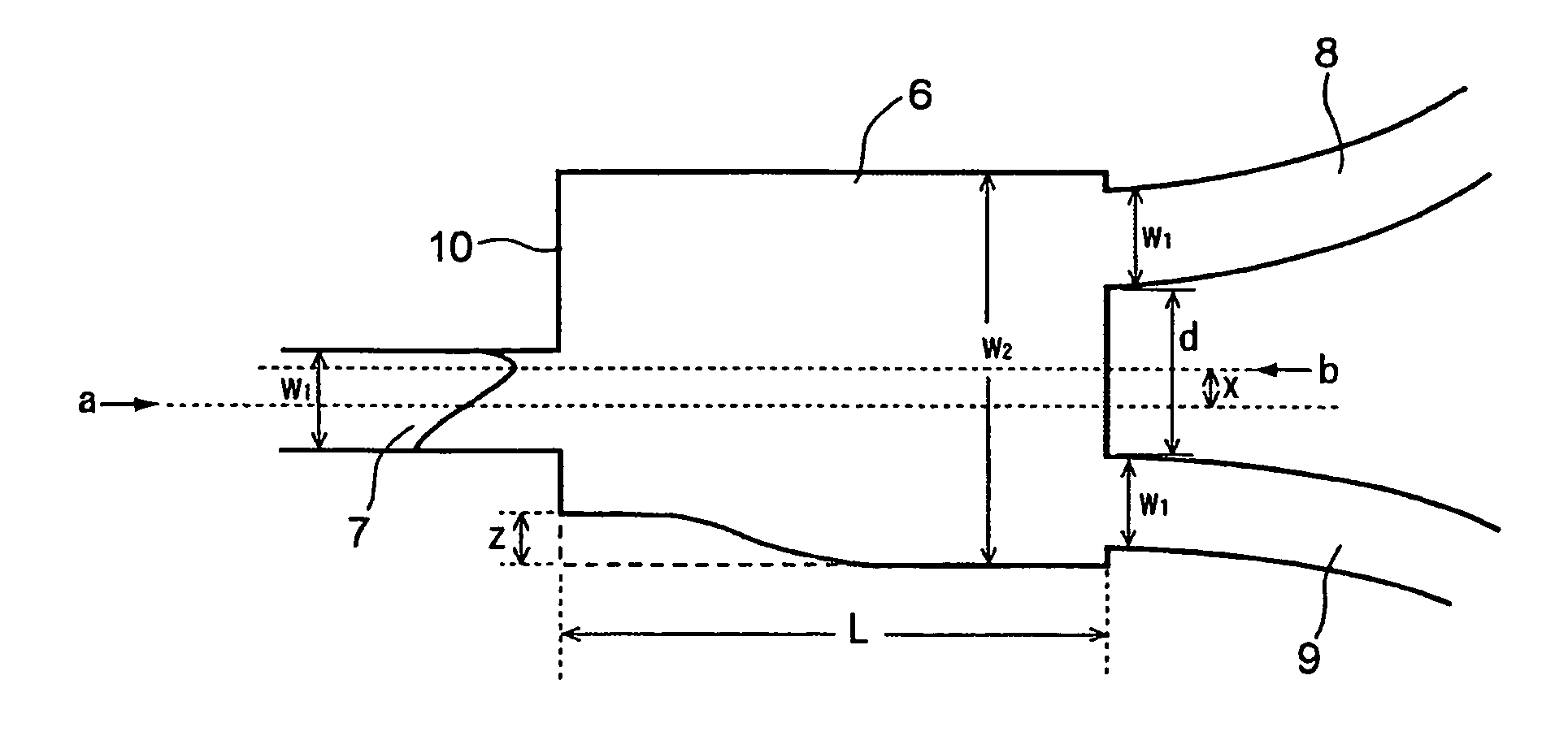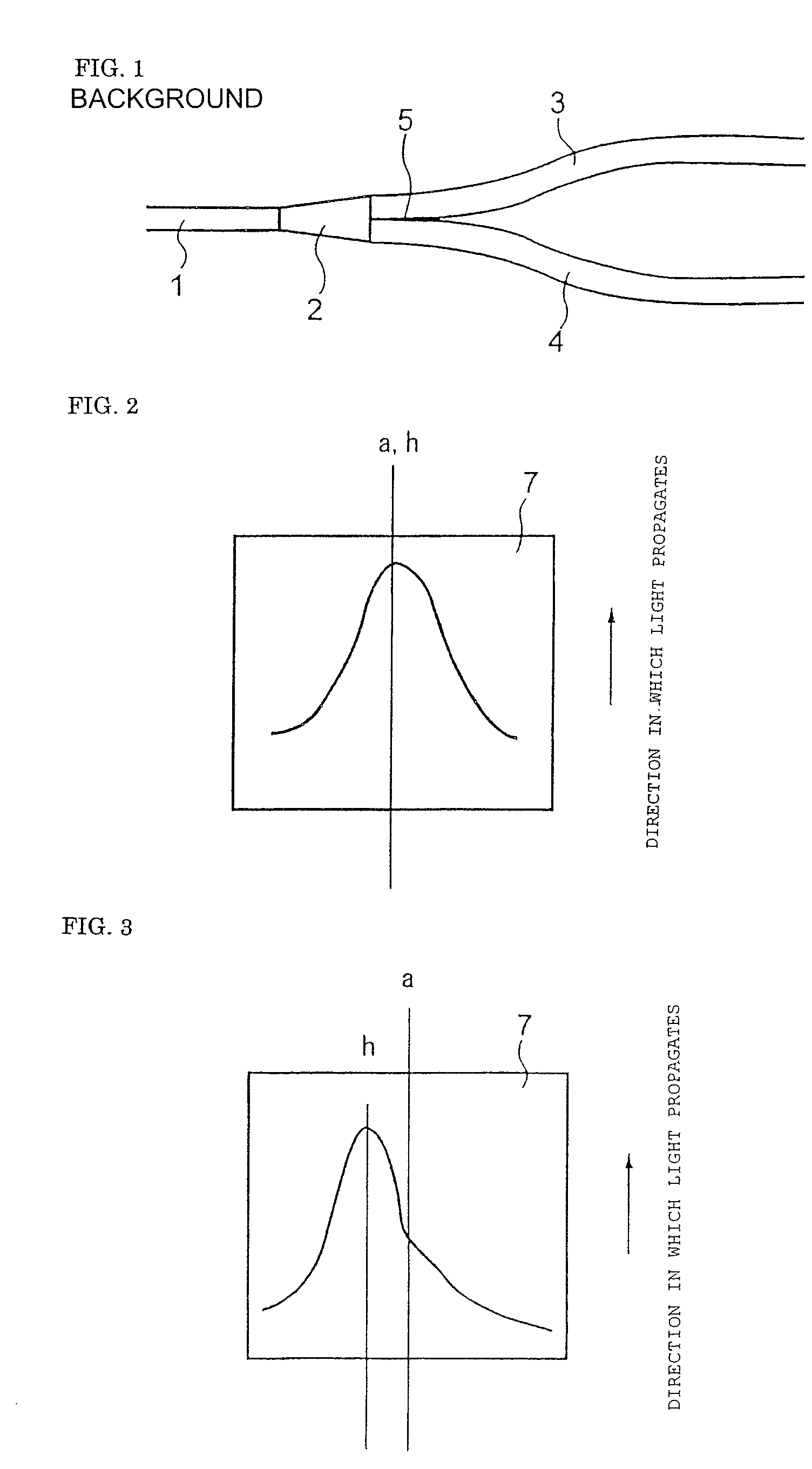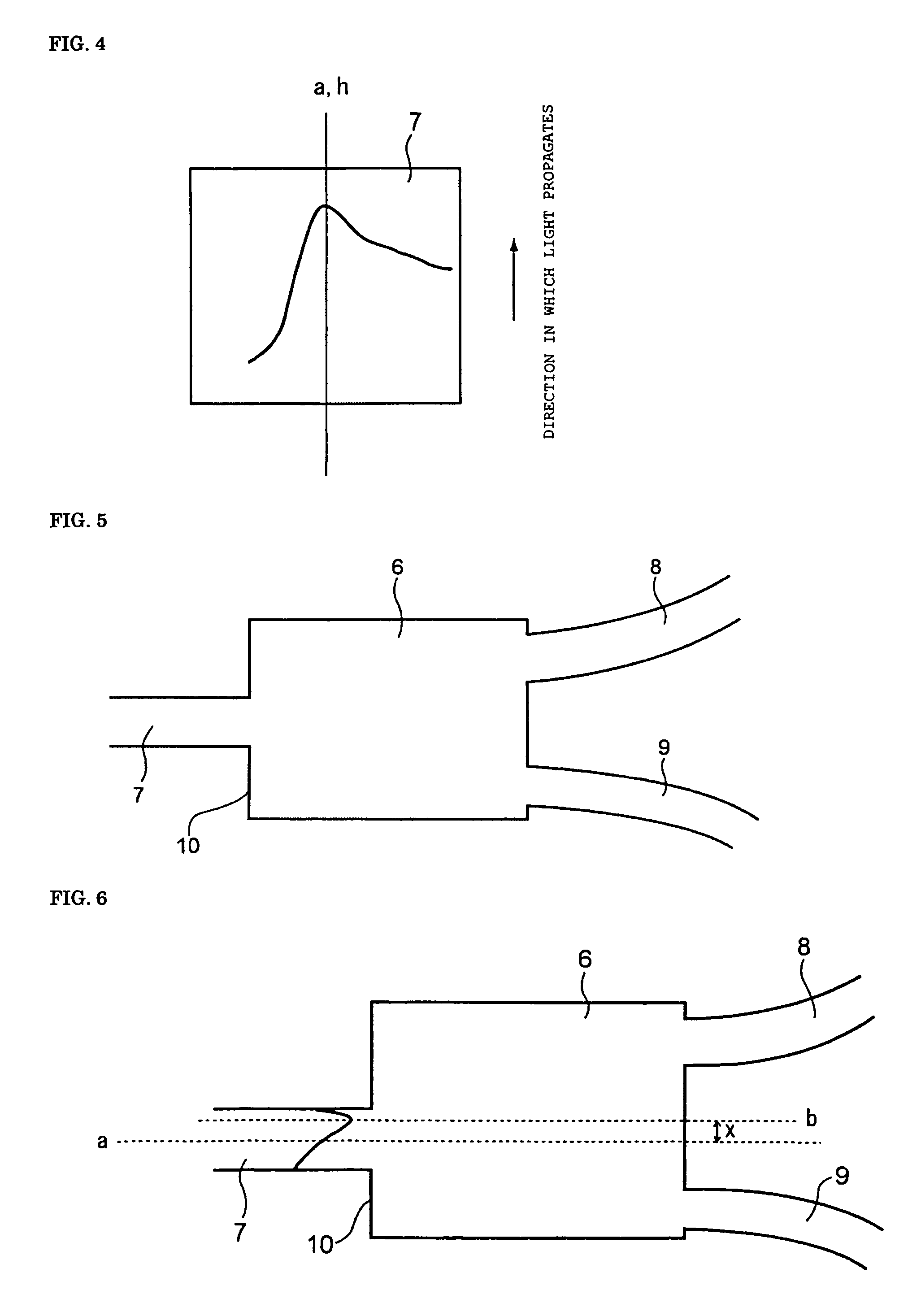Light branching optical waveguide
a branching optical waveguide and light branching technology, applied in the field of light branching optical waveguides, can solve the problems of large branch loss, limited radius of curvature increase, and point cannot be of a completely sharp structure, so as to reduce the variation of branching ratio, reduce the branch loss, and reduce the wavelength dependence
- Summary
- Abstract
- Description
- Claims
- Application Information
AI Technical Summary
Benefits of technology
Problems solved by technology
Method used
Image
Examples
example 1
[0097]A light branching optical waveguide having a sketchy structure shown in FIG. 10 was produced by means of the following materials.[0098]Core: Fluorinated polyimide resin (“OPI-N3205” manufactured by Hitachi Chemical Co., Ltd.)[0099]Clad: Fluorinated polyimide resin (“OPI-N1005” manufactured by Hitachi Chemical Co., Ltd.)
[0100]The incident light waveguide (single mode, core portion) 7, and the two output light waveguides (single mode, core portions) 8 and 9 each had a width w1 of 6.5 μm, the multi-mode optical waveguide had a width w2 of 15 μm and a length L of 220 μm, and a distance d between the output light waveguides (single mode, core portions) at the exit of the multi-mode optical waveguide was 3.5 μm. The incident light waveguide (core portion) 7 had a curve portion with a radius r of curvature as 15 mm, as shown in FIG. 10. The intensity distribution of light entering into the multi-mode optical waveguide from the incident light waveguide at the connecting surface 10 of ...
example 2
[0102]A light branching optical waveguide having a multi-mode optical waveguide with a core shape having such a notch as shown in FIG. 11 was produced by means of the same materials as those shown in Example 1.
[0103]The incident light waveguide (core portion) 7, and the two output light waveguides (core portions) 8 and 9 each had a width w1 of 6.5 μm, the multi-mode optical waveguide had a width w2 of 15 μm and a length L of 220 μm, and a distance d between the output light waveguides at the exit of the multi-mode optical waveguide was 3.5 μm. The geometrical central axis a of the incident light waveguide (core portion) 7 and the geometrical central axis b of the multi-mode optical waveguide were allowed to coincide with each other. The entrance portion of the multi-mode optical waveguide was cut from a side edge by a distance z (z=0.6 μm). That is, the multi-mode optical waveguide had a sinusoidal curve structure ranging from its entrance portion to its exit portion. Although not s...
example 3
[0104]A light branching optical waveguide having the core shape of a multi-mode optical waveguide having such a notch as shown in FIG. 12 and an offset structure was produced by means of the same materials as those shown in Example 1.
[0105]The incident light waveguide (core portion) 7, and the two output light waveguides (core portions) 8 and 9 each had a width w1 of 6.5 μm, the multi-mode optical waveguide had a width w2 of 15 μm and a length L of 220 μm, and a distance d between the output light waveguides at the exit of the multi-mode optical waveguide was 3.5 μm. The entrance portion of the multi-mode optical waveguide was cut from a side edge by a distance z (z=0.8 μm). That is, the multi-mode optical waveguide had a sinusoidal curve structure ranging from its entrance portion to its exit portion. The offset x between the geometrical central axis a of the incident light waveguide (core portion) 7 and the geometrical central axis b of the multi-mode optical waveguide was 0.9 μm....
PUM
 Login to View More
Login to View More Abstract
Description
Claims
Application Information
 Login to View More
Login to View More - R&D
- Intellectual Property
- Life Sciences
- Materials
- Tech Scout
- Unparalleled Data Quality
- Higher Quality Content
- 60% Fewer Hallucinations
Browse by: Latest US Patents, China's latest patents, Technical Efficacy Thesaurus, Application Domain, Technology Topic, Popular Technical Reports.
© 2025 PatSnap. All rights reserved.Legal|Privacy policy|Modern Slavery Act Transparency Statement|Sitemap|About US| Contact US: help@patsnap.com



